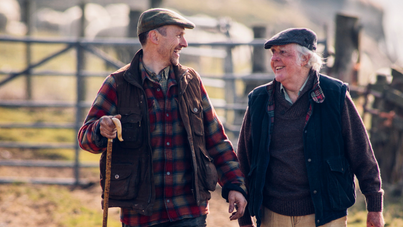Author
Proprietary estoppel is commonly referred to as the “golden ticket” to the family farm, with claimants sometimes being heralded as the “cowshed Cinderella”. Ironically, the costly and protracted legal proceedings rarely mean the parties live happily ever after.
The key elements of a claim are well established; an assurance must be made that has been relied upon to one’s detriment. There is a tendency to assume that if the threshold tests for each core ingredient can be met, your client may be home and dry. Recent cases, however, show otherwise.
Following a long line of cases over the last 5 years or so, some of which appear contradictory, we thought a summary of where things have got to would help clarify the position.
1. Assurance
A mere statement of present intention or an assurance?
“One day my son, all this will be yours”: a well-versed phrase all too familiar amongst farming families. It can be argued that, even if the parent has said they intend to leave the farm to their child upon their death, that statement was merely a statement of their present intention, rather than a promise to leave them the farm. But what differentiates the two?
In James v James [2018], the father had, on one occasion, told the son that he intended to leave the land in question to him on his death. This was held to be a mere statement of the father’s then present testamentary intention, rather than a promise which the father intended the son to act upon. In Habberfield v Habberfield [2018], the promises had been made repeatedly and were such that the parents intended the daughter to act upon. Consequently, the argument that the promise was merely a statement of present intention failed.
Nevertheless, frequency is not the sole consideration. In Gee v Gee [2018], it was accepted that representations were made and, although not frequently repeated, they were a material consideration in the son staying on the farm.
Is evidence required for the assurance to be sufficiently clear?
In Thompson v Thompson [2018], sufficiently clear representations were made, even though the claimant could not give detailed evidence of a specific promise. Given the informal nature of farming family relationships, this is not unusual and illustrates that the inability to give details of the making of the promise is not fatal to the claim.
Was the assurance made by only co-owner?
Here lies another common scenario where only one co-owner (typically the father) made the assurance without the other owner of the farm (usually the mother).
In Fielden v Christie-Miller [2015], it was insufficient for a representation to be made by only one of the trustees. Consequently, a claim can only arise if the representation was either made by the trustees unanimously or, alternatively, made by one of them but with the authority of the others.
In Preedy v Dunne [2015], the Judge confirmed what would happen if the trustees were also the beneficiaries. In this situation, if A alone makes a representation, even if A made the representation without B’s authority, the estoppel would be binding on A’s beneficial share. This would not be binding on B’s one-half beneficial share as the representation was made without B’s knowledge. This was unsuccessfully argued in Habberfield v Habberfield [2019].
2. Reliance
Is evidence required to show a causal link between the assurance given and detriment suffered?
The test for reliance centres around what would have happened if the claimant was told that the assurance had been withdrawn. If the claimant would have simply continued in the same way, reliance is not established. The claimant would need to show that, had the assurance been withdrawn, they would have altered their behaviour in some way. The courts have applied this in varying levels of strictness.
In James, a strict approach was taken. The claimant had to prove on the evidence that he would have gone away and made his fortune elsewhere, had the assurance been withdrawn. In contrast, a relaxed approach was taken in Habberfield. As the Judge was unable to “recreate an alternative life….in a world without the assurances”, evidence was not required.
As Habberfield was made at Court of Appeal level, it may be difficult to show that a claim is fatally flawed merely because the claimant cannot product specific evidence of what they would have done, had the assurance been withdrawn.
3. Detriment
Has the claimant enjoyed countervailing benefits which outweigh any detriment suffered?
In Horsford, this was held to be a potentially fatal flaw in the claim. The Court must weigh the detriment against the benefits, and it is only if there is a net benefit, rather than burden, that a defence to the claim will succeed.
Remedies
The Court’s extremely wide discretion causes difficulty when advising clients in terms of the likely outcome insofar as quantum is concerned, although a clean break approach is favoured.
In Guest v Guest [2022], the Supreme Court held that the parents had a choice in the remedy; either to hold the farm on trust for the son such that he would inherit either on their death or its sale or, alternatively, a discounted lump sum could be paid to reflect that the son was essentially receiving his inheritance during their lifetime.
Nevertheless, remedies are not set in stone. The case of Moore v Moore [2018] demonstrates that a remedy can be successfully appealed, if it can be shown that certain factors were not fully considered.
Partnerships
Is the entering of a partnership deed by the parties after the assurances a bar to a claim?
Here, we have conflicting decisions. In Horsford, entering a partnership deed after the assurances were made was found to be a bar, whereas in Morton v Morton [2022], this was not the case.
Nevertheless, the partnership deed in Horsford contained an entire agreement clause, which was fatal. It was held that the claimant was entitled to no more than his rights as partner in accordance with the deed, as the deed expressly overrode any earlier agreements. In Morton however, there was no such clause.
Conclusion
What is abundantly clear from this long line of cases is that proprietary estoppel claims are fundamentally uncertain and difficult to predict. So much depends on the actual conversations and actions which occur and the credibility of the relevant parties. That said the court decisions do provide a framework and applying the various principles explained in the judgments allows experienced practitioners to assess the likelihood of success.
Print article


